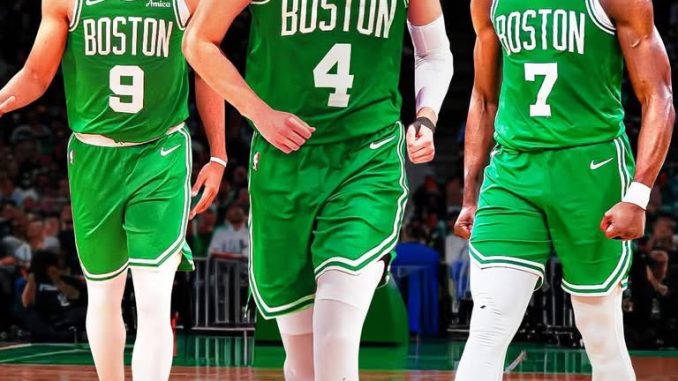
In an offseason full of change, the Boston Celtics may have just pulled off the most under-the-radar move of the summer — and one that could quietly define the team’s next era.
With franchise star Jayson Tatum sidelined for the season due to injury and a financial crunch looming, Boston is entering what can only be described as a “soft reset.” Gone are the splashy contracts of Jrue Holiday and Kristaps Porziņģis, both moved in cap-conscious trades aimed at curbing the Celtics’ record-setting tax bill. In their place, Boston is betting on youth, flexibility, and long-term sustainability.
Enter Walker Kessler.
Acquired in a three-team trade with the Utah Jazz and Miami Heat, the 24-year-old center is the kind of piece championship contenders don’t often find on a budget. The Celtics shipped out Anfernee Simons, Neemias Queta, multiple second-round picks, and cash considerations to get the deal done — and emerged with a player tailor-made for their needs.
Kessler, who averaged 8.1 points, 7.5 rebounds, and 2.4 blocks in just 23 minutes per game last season, brings an elite rim-protection profile to a team suddenly thin in the frontcourt. More importantly, he’s still on a rookie-scale deal and isn’t set to hit restricted free agency until next summer. That gives Boston flexibility in how they manage both their cap sheet and their roster construction moving forward.
The Financial Side
Let’s be clear: this wasn’t just a basketball move — it was a financial maneuver as well.
Boston’s payroll had ballooned to historic levels after giving out a supermax to Jaylen Brown and extending key veterans. With new second apron penalties threatening not just the Celtics’ ability to add players, but also their flexibility in trades and draft movement, something had to give.
By flipping Simons — who they had recently acquired in the Holiday deal — and shedding Queta, Boston slashed nearly $100 million in projected payroll and tax payments over the next two years. The trade also generated a $27.7 million trade exception, one of the largest in NBA history, which could be used to absorb salary in future trades without sending back matching contracts.
Just as crucial: The move sets the Celtics up to duck under the luxury tax line for the next two seasons. Doing so would reset the repeater tax clock, a major concern for a franchise that will need to extend or re-sign multiple stars in the coming years.
What Kessler Brings
On the court, Kessler checks a lot of boxes.
He’s one of the league’s most promising shot blockers and a natural fit in a defensive scheme that thrives on switching and rim deterrence. While he’s not a floor-spacer, Kessler is an efficient finisher around the basket and a high-level rebounder on both ends.
He’s also durable — something Boston sorely needs with Porziņģis gone and Al Horford aging out of his minutes load. With Derrick White and Jaylen Brown still in their prime, and Tatum expected to return next year, the Celtics are building for a timeline that includes both present competitiveness and future flexibility.
And don’t overlook the fact that Kessler is extension-eligible now. While Boston may wait until next summer to fully evaluate his fit, his restricted free agency gives the front office leverage to retain him on a team-friendly deal — or match an offer sheet if necessary.
A Rebuild Without the Rebuild
What makes this move so significant is that it doesn’t signal a tear-down. Boston isn’t tanking. They’re retooling.
Instead of doubling down on veterans and risking long-term tax penalties, the Celtics are choosing a path that allows them to remain competitive while also getting younger, cheaper, and more flexible. It’s a version of the reset that few contenders are willing — or able — to make.
In the short term, Boston will rely heavily on White, Brown, and young rotation players like Payton Pritchard and Sam Hauser to stay afloat. But the addition of Kessler stabilizes their center position for the next several years, and positions them to reemerge as a title contender when Tatum returns.
If the plan works, this could go down as one of Brad Stevens’ savviest summers — a move that avoids the headline splash, but delivers meaningful long-term value.
In a league dominated by stars and cap sheets, sometimes the quiet wins matter most.
Would you like this formatted for a blog post or newsletter?
Leave a Reply